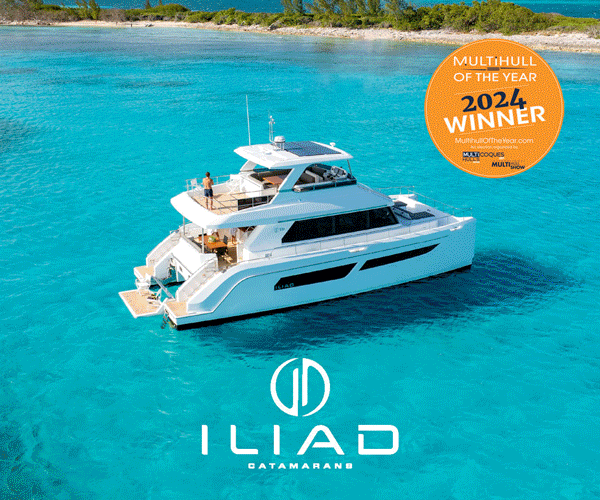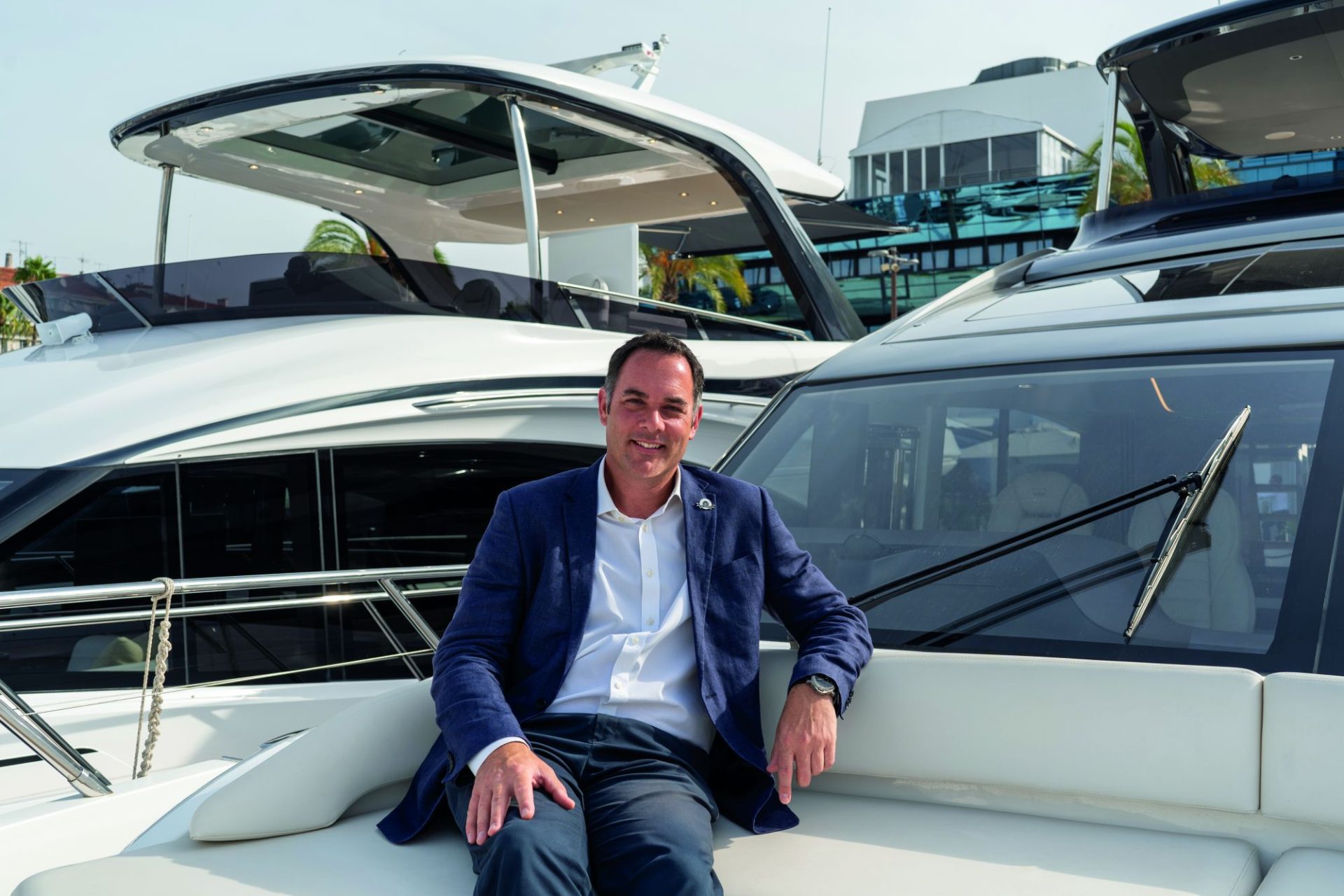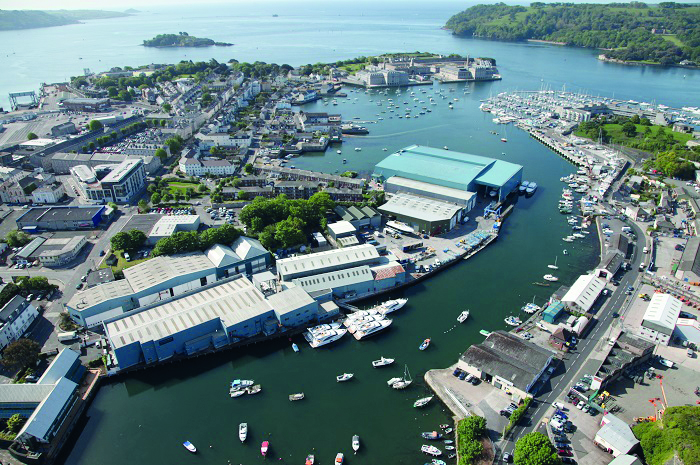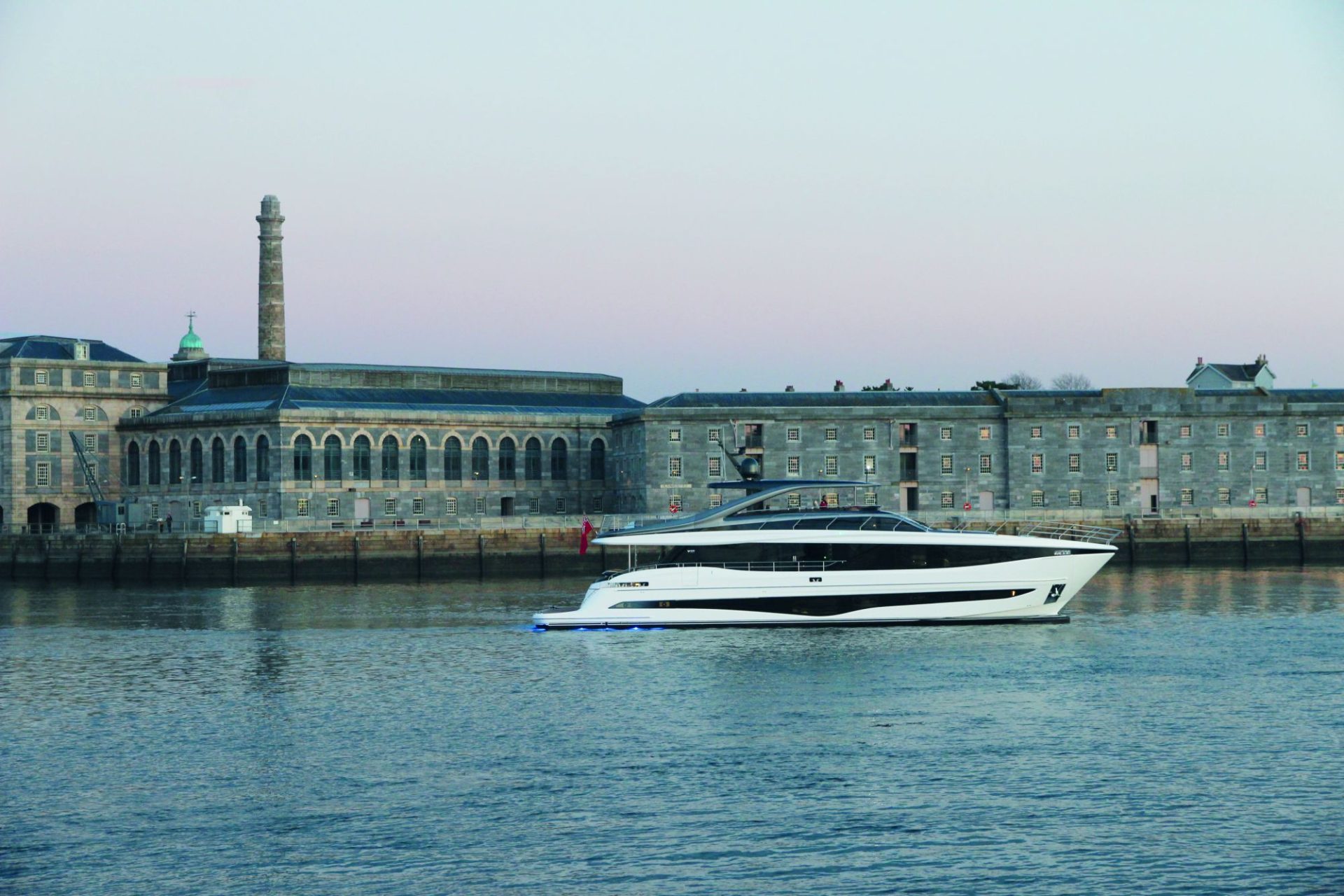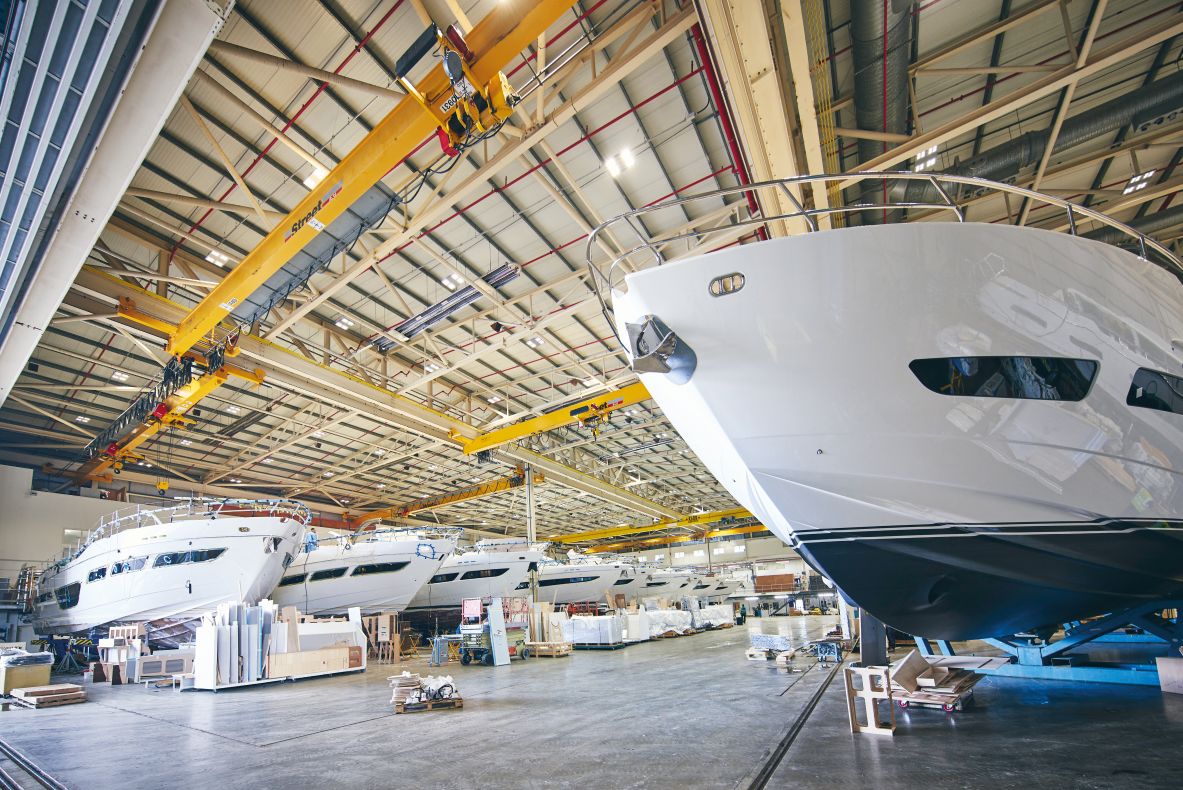Powerplay: Will Green
Almost 20 years to the day he joined British builder Princess Yachts, in September 2023, Will Green was announced as the company’s new CEO. During the Cannes Yachting Festival, Green outlined his vision for the future of one of the world’s leading boatbuilders.
Written by Charlotte Thomas
11 January 2024
It was, perhaps, a fitting start for a new love affair when KPS Capital Partners announced around Valentine’s Day in February last year that it had acquired a controlling ownership stake in UK-based yacht builder Princess Yachts.
Heralding a new era of investment for the marque, which had celebrated a period of unprecedented demand under the stewardship of Antony Sheriff, in late summer, the new majority shareholders announced that Sheriff was stepping down and Will Green, who joined Princess on 3 September 2003, would take over as the new CEO. Here, Green outlines the opportunities unfolding for the builder and his vision for the yard’s future.
Ocean magazine: What was your original role at Princess Yachts, and how did it evolve?
Will Green: I joined when company founder David King was still managing director, and I started as assistant sales director under David Pyle on the commercial side of the business. I was the succession plan for David Pyle and joined the board a couple of years in, eventually taking over from him when he retired.
What will you look to change or implement over the next five years?
In my view, a lot of the hard work has been done already. I’ve been on the board for 18 years, so I’ve been part of the product strategy and the evolution of the platform-building strategy, which I really believe in – it has worked for us both industrially and commercially.
Now, we need to take all those fantastic ingredients, having the best boats in the business and the best product range in our sector, and build on what we’ve already done with the brand. The industrial challenges we’ve had are solving themselves as the supply chain shakes off its COVID hangover – there’s still a bit of disruption, but it’s a lot better than it was.
We’ve also got some of the most skilled and experienced boatbuilders among our workforce of 3,500 at the yard, and we have a lot of families with two generations working for us now, even three generations, which is fantastic. The brand is unrecognisable from what it was when I started.
Back then, the distributors did a lot of the work and were the brand for all intents and purposes. Now, they’re our partners and we do it all together, but we have the overall brand vision.
Most of all, though, we’re a family, both within the company and with our customers. You can feel that in Australia, and it’s like that everywhere.
A lot of our distributors have been with us for decades and know the brand DNA, so it makes things relatively easy when we can listen to those who know the company so well.
Princess has experienced unprecedented demand for yachts like the Y72 and others at the top of the range, with large numbers of orders. What capacity are you working at, and will there be investment in facilities under KPS?
Based on today’s output and efficiency, we’re full, with 3,500 people building 200 yachts a year. I believe that with the same resources, we can build more than that by being more efficient, so we’re getting back to core principles and getting the right people in the right place – we’ve got a lot of good experience in the company. It’s not straightforward, but I do see a clear path ahead industrially.
We’ve also reached the point where every model line is pushed to the gunnels. Investment will mean every line can move up a shed, enabling the next lifecycle of products to have space to grow – that’s why it’s so essential. Also, our South Yard is in the Freeport area, which offers tax and customs benefits and incentives to support growth, innovation and investment in the region, and we’ve been a driving force in that initiative. We’ve agreed investment with KPS and they’re very supportive – they’re not afraid to invest in capacity and people if it’s the right thing.
How is the new shareholding structured, and what can you tell us about KPS?
KPS Capital Partners has a controlling interest, so they’re effectively our owners. Our previous shareholders have retained a small minority share, which we’re happy about. KPS is an unusual private equity company because they don’t believe in financial engineering and haven’t leveraged us full of debt.
For them, it’s all about taking a manufacturing company – that’s all they buy – and making them better, fitter and returning them to quality profits. It’s about having a plan you can deliver and hopefully becoming even more customer focused. Obviously, I’ve been on the customer side for 20 years – everything we do has ultimately got to be for the customer’s benefit.
It will be nice to change the company’s direction slightly so that everyone on the shop floor is just thinking about the end buyer. We have customers at the shipyard every day, but there’s not much interaction – in the future, I want to get the customers and the shop floor closer together.
What are your key geographic markets, and how is your presence in the Asia-Pacific region?
The Med is our biggest market, partly because there are so many nationalities there and we have so many different distributors selling into that market. We’re very strong in the US and that has grown over recent years too. And we’ve been active in the Asia-Pacific region since before I joined, so we’ve got a good position in Asia and Australasia, and the Middle East as well. We’re everywhere there’s a seaside – and a lot of places there isn’t one.
We’ve got 44 distributors and they’re all among the most respected people in their respective industries – Greg Haines and Scott Davis in Australia are fantastic, as is the Williamson family in New Zealand.
What sizes do your current models span, and what are your plans for future yachts?
Our current models span 40 to 95 feet, from the V40 to the X95 and Y95 across five ranges. We’ve got a fantastic order book, more demand than supply, and brilliant partners who’ve been very loyal to Princess.
Our mission now is to grow the company organically in a healthy way, and that will perhaps include building a different board or innovating in different directions. We haven’t defined any of this yet, but there’s an opportunity for us.
I’d like us to build bigger boats again. Although there are also reasons not to, it’s a case of never say never. Job number one is to focus on making the business profitable, sustainable and healthy, and to make everyone in the chain – from the shop floor to our customers and shareholders – feel part of the family.
Do you have any plans to build smaller?
I’d like to, if we have the capacity. There’s definitely an opportunity for a smaller Princess, and I believe in widening the base of the triangle as 50 percent of our customers come back and buy another boat, usually a bigger one. I’d love to add a 35-footer, although it’s not top of the priority list right now!
How are you planning to evolve toward more hybrid options, and what else are you doing to be more sustainable?
We have a vision of being a more sustainable boatbuilder and while other companies are shouting louder about it, we’re doing at least as much as, or probably more than they are. For the yachts, we have hybrid options for the X95 and Y95, and on paper, they look fantastic. That’s a commercial proposition – you can buy one today but it’s relatively expensive and, by itself, isn’t going to impact our overall footprint massively.
But we do have a biomass boiler that’s going to heat the whole South Yard facility, running on off-cuts from the joinery department, and we have solar panels on the shed roofs that will generate nearly 3-million kilowatt hours of power a year. That’s real – and we’ve also got 40 to 50 projects of varying levels of importance, from reducing landfill waste to increasing recycling.
I’ve got ideas and thoughts about how the product line-up might look in 10 years, but we haven’t defined what Princess will be yet – that’s what we need to get into next. Every boat we develop and every project we undertake, we put saving weight and increasing hull efficiency at the core.
It’s not about hybrid solutions per se; it’s about burning less diesel and delivering more performance per horsepower – and that’s what we’ve been about for the past 10 years. People are using their boats differently now, and with stabilisation, people are happy to travel more slowly and enjoy the journey rather than race to their destination.
Are there any trends that will inform the design of Princess models?
Everyone is doing different things and, of course, there’s room for that in the industry. We have our core ingredients of what makes a Princess a Princess, and generally, that’s a boat for passage – making for serious boaters.
If something will make a tangible difference to owners, we’ll seriously consider it, but if it’s a fad that makes it look cool at a boat show, it’s probably not for us – although I’m not against innovation!
Sometimes our customers come to us with ideas, and we’re happy to be told where we should be doing things differently or consider different features.
Will KPS have input on the shape of the product line?
Not really. The management team runs the company and is there as a support network. They’re ambitious and excited about the industry, and a healthy level of growth is an expectation for any new owner, but so far, there’s been no direction on product plan.
Their expertise lies in operational efficiency, and their story is amazing – it started with a steel mill the management took over and, in doing so, saved a small town where half the population worked at the mill.
KPS was formed on that success story, so there’s a turnaround philosophy that’s part of their raison d’être. They’re great people, and I’m very excited about it.



